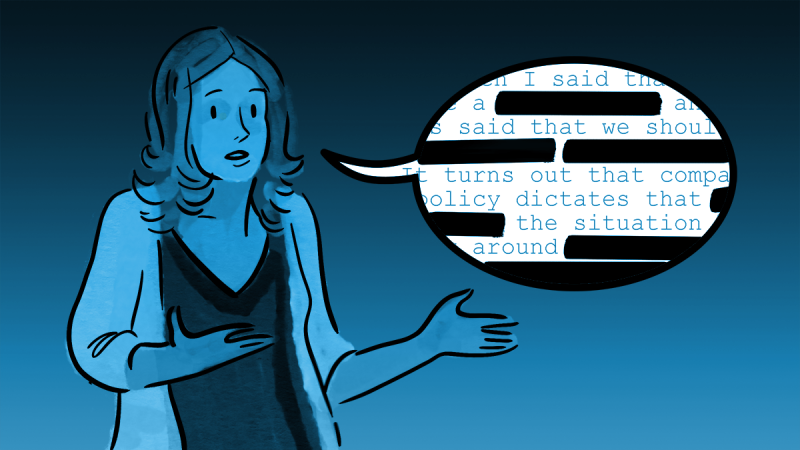Confidentiality in Employment Agreements

Confidentiality or nondisclosure agreements (NDAs) are controversial, and some legislatures are taking a hard look at them and passing restrictions.
On October 7, 2021, the California Senate passed a Bill nicknamed the “Silence No More Act,” which went into effect on January 1, 2022. The California law voids nondisclosure or confidentiality provisions of agreements in employment discrimination cases of any kind, including on the basis of sex, race, national origin, or sexual orientation. A number of states already implement certain restrictions on confidentiality provisions in employment agreements, but California is the first to take these restrictions quite so far. Other states are considering passing similar legislation. For instance, Colorado proposed a bill restricting NDAs in 2021: SB21-023. That Bill did not pass, but state legislatures will keep looking at this issue.
But what is an NDA and what does it usually cover?
NDAs or Confidentiality Agreements
NDAs are found in two primary contexts: at the end of employment in a severance agreement, or as a means of settling a lawsuit. NDAs may include provisions that protect both the employee and the employer (called a mutual non-disparagement clause). They often require confidentiality and may protect trade secrets. In most states, NDAs have become part of the boilerplate severance agreement, in part because of their versatility and the mutual protection provided for both parties. Failure to abide by a valid, enforceable NDA can mean a lawsuit for breach of contract—but typically, once an employee has broken an NDA, the cat is out of the bag, so to speak, and employers may or may not try to hold the person accountable.
Pros and Cons of Restricting NDAs
What are the pros and cons of restricting NDAs? Proponents of the California Act said that companies were using NDAs to prevent employees from speaking out about instances of harassment, discrimination, or assault they faced while on the job.1 Others say that churches or ministries may use NDAs to silence victims of abuse.2 Meanwhile, opponents of the California Act and similar bills, have said that voiding NDAs creates a potential liability for employers, especially when those employers have done nothing wrong and don’t want former employees to make false or misleading statements.
Moreover, restrictions on NDAs may not benefit employees. A settlement or severance agreement is, at its essence, a “deal,” exchanging money or a recommendation for the employee for something the employer wants, such as avoiding a lengthy court battle. In some cases, the only thing the employer really wants is for the employee not to bad-mouth it or discuss the situation on social media. If a confidentiality agreement is off the table, the employee may find his or her bargaining power severely curtailed.
Creating an Enforceable Confidentiality Agreement
Laws about NDAs vary in severity. Some states make it harder to enforce confidentiality agreements for settlement of sexual abuse or harassment claims. But provisions for mutual non-disparagement have been enforceable in some states like Colorado.
An NDA is generally more likely to be enforceable if it protects trade secrets, as is the case in Colorado. Trade secrets are defined as “any formula, pattern, device, or compilation of information which is used in one’s business, and which gives him an opportunity to obtain an advantage over competitors who do not know or use it.”3 Confidentiality provisions for an employer’s trade secrets will likely be enforceable in part because a failure to include a provision safeguarding a trade secret could actually result in losing the intellectual property.4
If the agreement is valid and enforceable, an employer (or employee) may hold the opposing party accountable by suing for breach of contract. Crafting a valid and enforceable confidentiality agreement can be tricky and may require the expertise of an attorney, especially if the employer does business in several different states, as each may have different requirements for enforceability.
_________________________________________
1 Ifeoma Ozoma, An NDA was Designed to Keep me Quiet, The New York Times, available at: https://www.nytimes.com/2021/04/13/opinion/nda-work-discrimination.html
2 Diane Langberg, Non Disclosure Agreements (NDAs) and the Body of Christ), available at: https://www.dianelangberg.com/2021/02/non-disclosure-agreements-ndas-and-the-body-of-christ/
3 Management Recruiters of Boulder, Inc. v. Miller, 762 P.2d 763, 765 (Colo. App. 1988).
4 18 U.S.C. § 1836 (requiring that the information sought to be protected “is the subject of efforts that are reasonable under the circumstances to maintain its secrecy.”); See also Hagler Sys., Inc. v. Hagler Group Global, CV 120-026, 2020 WL 2042484, at *2, *11-12 (S.D. Ga. April 28, 2020) (“confidential information [was] only shared . . . pursuant to nondisclosure agreements.”).
Featured Image by Rebecca Sidebotham.
Because of the generality of the information on this site, it may not apply to a given place, time, or set of facts. It is not intended to be legal advice, and should not be acted upon without specific legal advice based on particular situations
